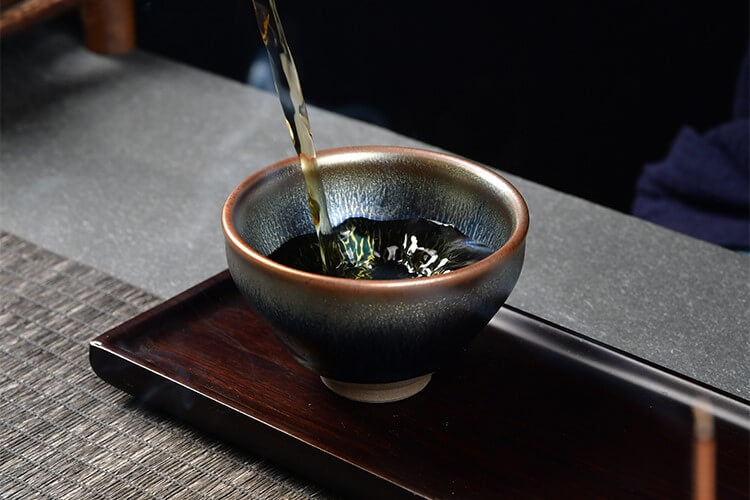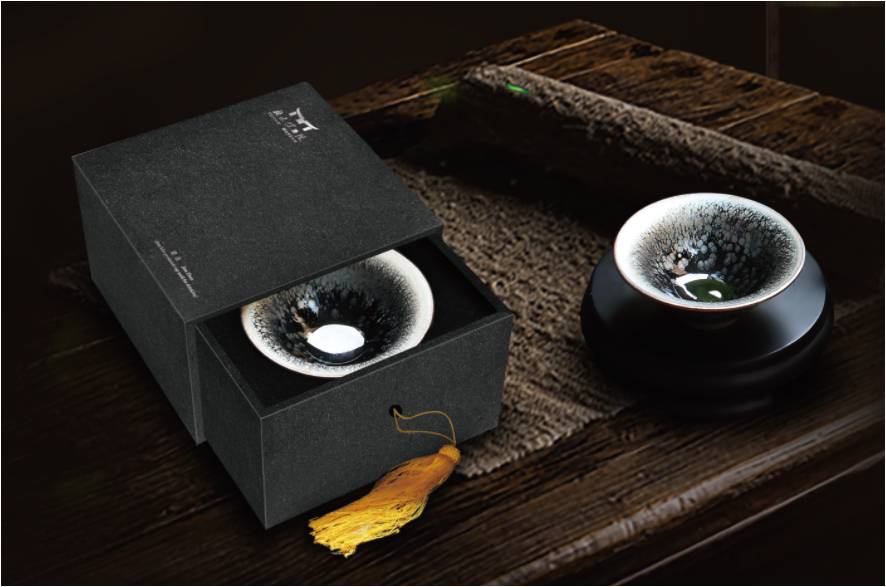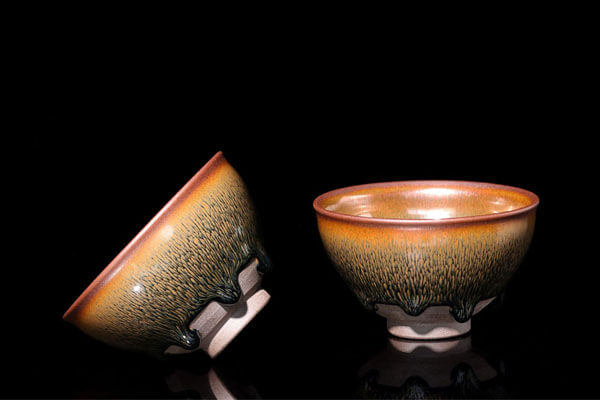The Aesthetics of Tenmoku Ware and Tea Culture
The Symbiosis of Tenmoku Ware Aesthetics and Tea Culture
The fame of Jian Zhan ( Tenmoku ) is inseparable from the influence of tea culture. During the Song Dynasty (960–1279), Chinese tea culture reached unparalleled heights. Building upon the tea traditions of the Tang Dynasty (618–907), Song scholars refined and deepened tea practices, establishing unique rituals of tea appreciation. As the saying goes, “Water is the mother of tea, and the vessel its father.” Though Jian Zhan originated in the late Tang and Five Dynasties period (9th–10th century), it flourished during the Song Dynasty, where tea culture and ceramics evolved in tandem. These black-glazed tea bowls became vessels that embodied the literary brilliance and artistic mastery of the Song era.
From Folk Pastime to Imperial Elegance
During the transition from the Tang to the Song, tea preparation shifted from brewing to whisking. This led to the rise of doucha (斗茶, “tea competitions”) in Jian’an (modern Fujian). Participants would brew their finest teas and judge them based on color, aroma, and foam texture. As dark-glazed bowls accentuated the white froth of whisked tea, Jian Zhan became the preferred vessel for these contests. What began as a folk pastime soon captivated the imperial court. Emperor Huizong (r. 1100–1126) and the aristocracy embraced Jian Zhan for its ability to retain heat, enhance tea fragrance, and exude understated elegance. The serene, lustrous black glaze resonated with the Song elite’s pursuit of subtlety and sophistication, aligning with the era’s Neo-Confucian ideals that blended Daoist tranquility and Buddhist introspection.
Revival of a Lost Art
For centuries, Jian Zhan was treasured abroad—revered by Japanese Zen monks and collected by European connoisseurs. The legendary Yohen Tenmoku (曜变天目), a Jian Zhan with iridescent “starry” glaze, remains a Japanese national treasure. Yet in its homeland, the craft vanished after the Song.
In 1979, under the leadership of Liu Tangshen, a restoration team comprising experts from the Central Academy of Craft Art, Fujian’s Science Commission, and local kilns embarked on a mission to revive Jian Zhan. After two years of research and experimentation, they successfully recreated a Song-style “hare’s fur” glaze in 1981 using traditional dragon kilns and wood firing. This marked the rebirth of a technique lost for over 700 years.
The Alchemy of Jian Zhan
Jian Zhan’s production involves 13 meticulous steps: selecting iron-rich clay and ore, aging the clay, wheel-throwing, trimming, bisque-firing, glazing, and kiln-loading. The magic lies in its iron-crystal glaze. At temperatures exceeding 1300°C, iron oxides in the glaze reduce, forming patterns like hare’s fur, oil spots, or partridge feathers. Each piece emerges unique—a dance of chemistry and chance.
Challenges of Mastery
- Clay and Form: The high-iron clay (8% Fe) is brittle and prone to warping. Artisans must account for a 20% shrinkage rate when shaping.
- Glaze and Kiln: Thick, flowing glaze cracks easily during drying. In the kiln, temperature fluctuations dictate whether patterns crystallize or dissolve. Silver-blue “oil spots” are especially ephemeral.
- Surrender to Fire: Even with precision, success is rare. A flawless hare’s fur bowl occurs in 1/1000 firings; a “partridge feather” in 1/10,000; a Yohen-like “starry” glaze in 1/1,000,000.
A New Era for Jian Zhan
In 2011, Jian Zhan’s firing techniques were inscribed into China’s National Intangible Cultural Heritage List. Today, artisans in Jianyang innovate while honoring tradition. Beyond tea, Jian Zhan now graces wine vessels, floral art, and incense rituals—its solemn beauty adapting to modern aesthetics.
Each Jian Zhan is a dialogue between past and present, earth and flame. As kilns crackle anew, this ancient art—forged in fire and philosophy—continues to captivate, embodying the Song Dynasty’s timeless pursuit: perfection in imperfection.






